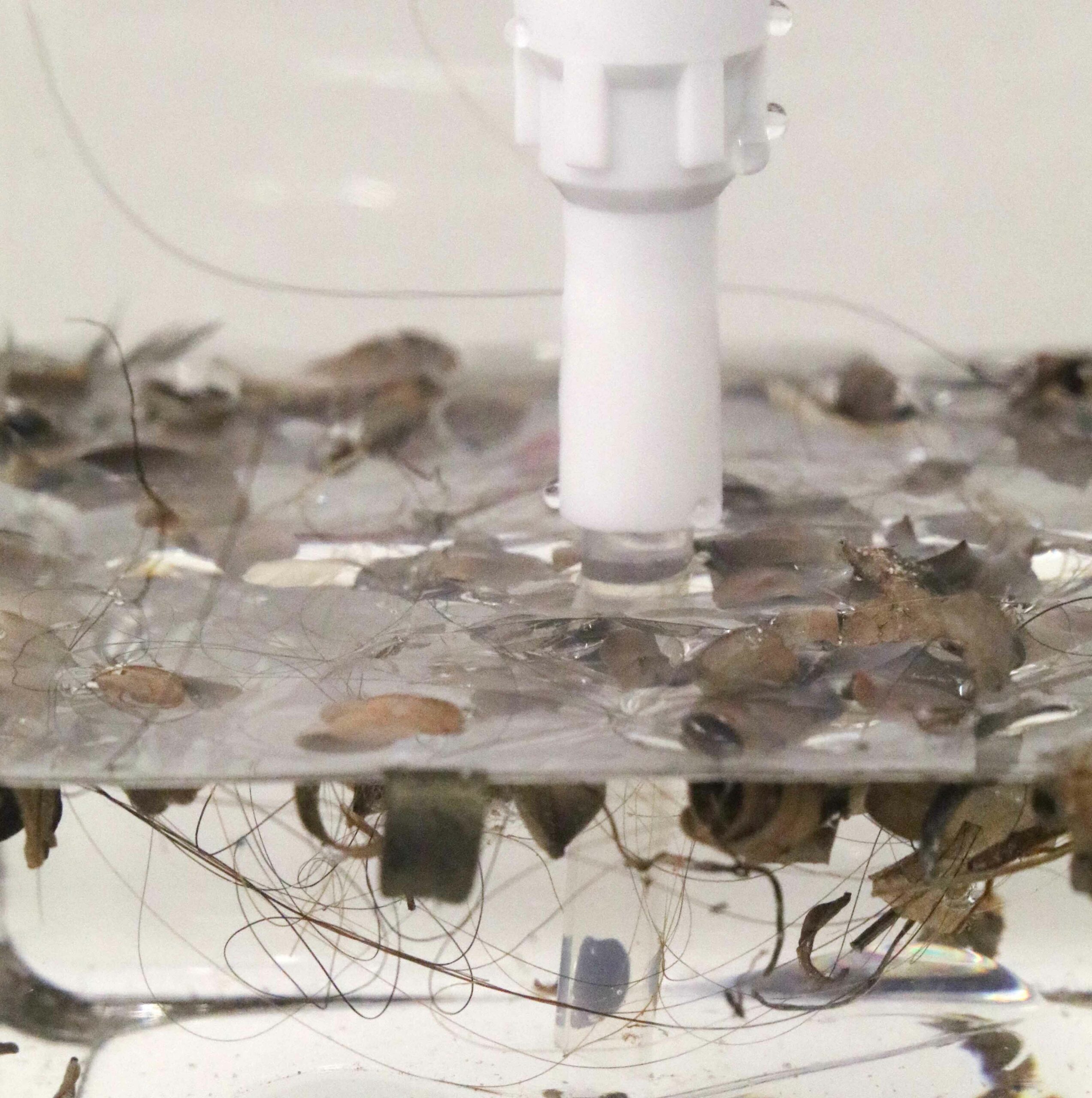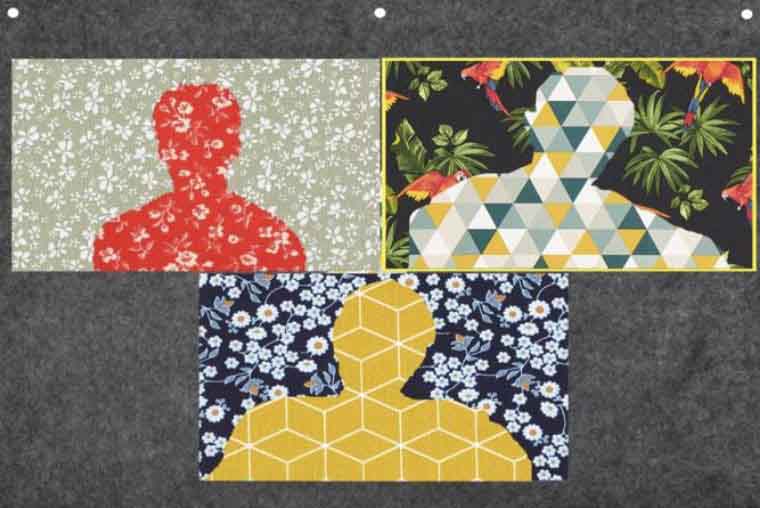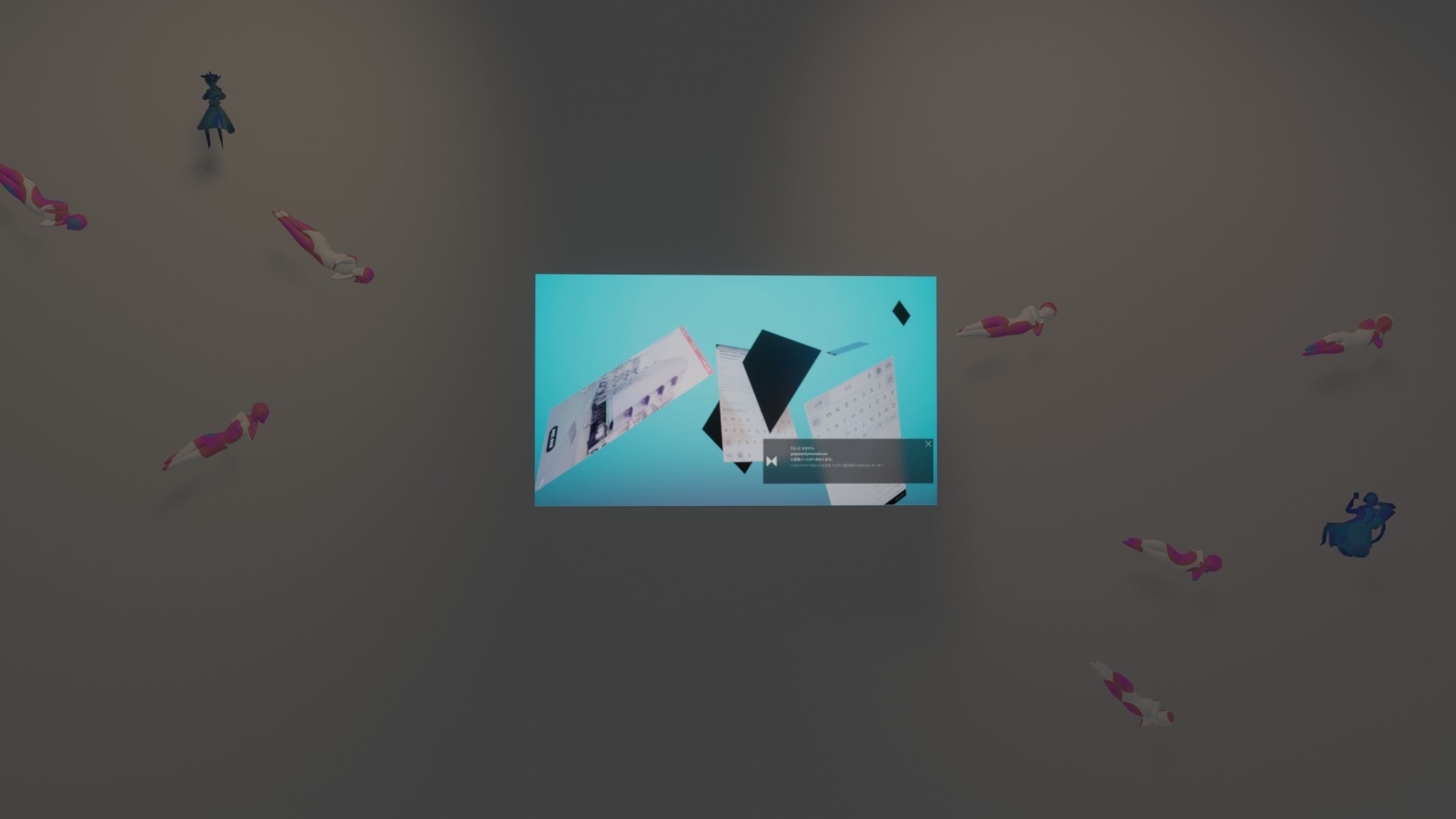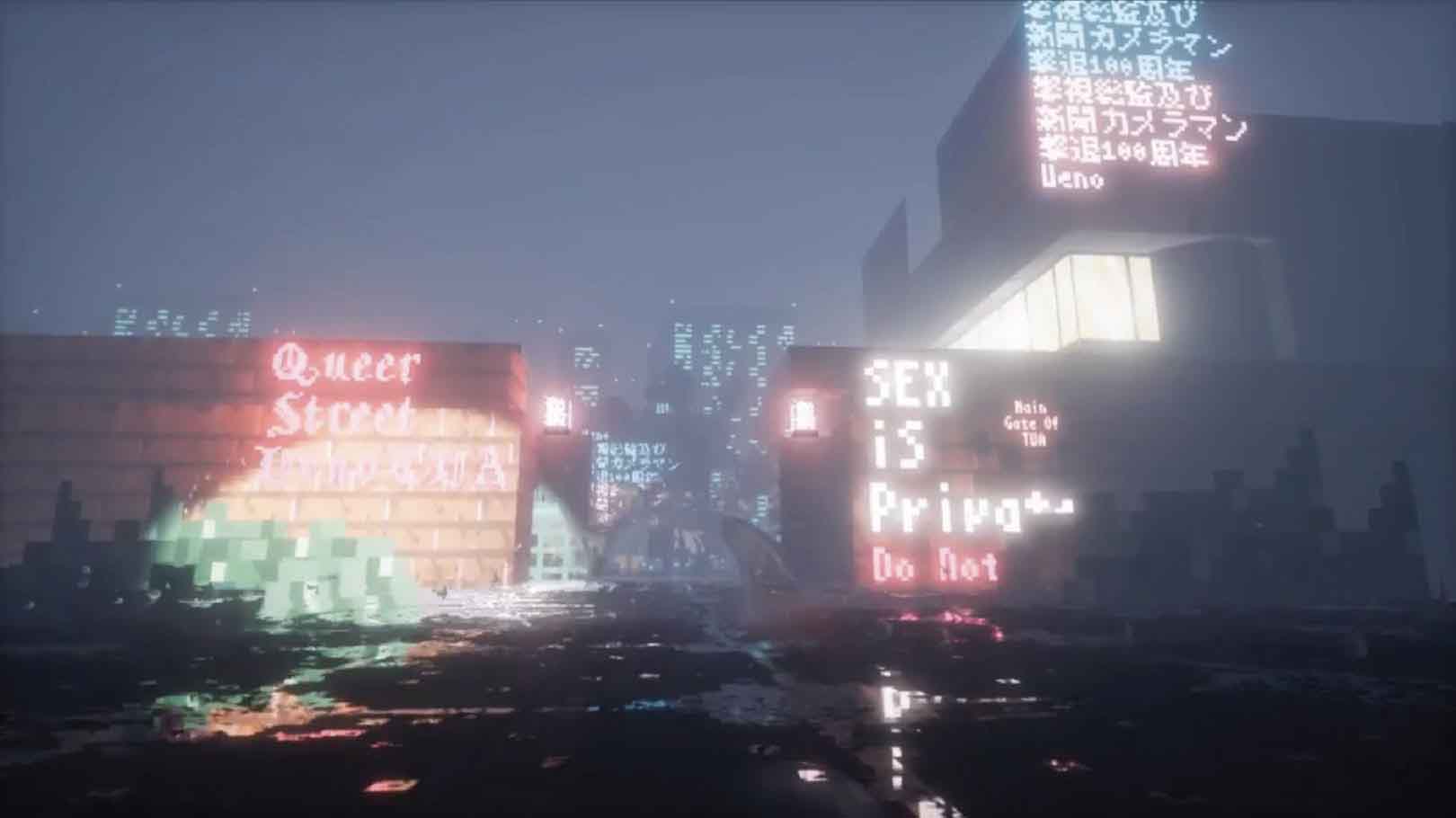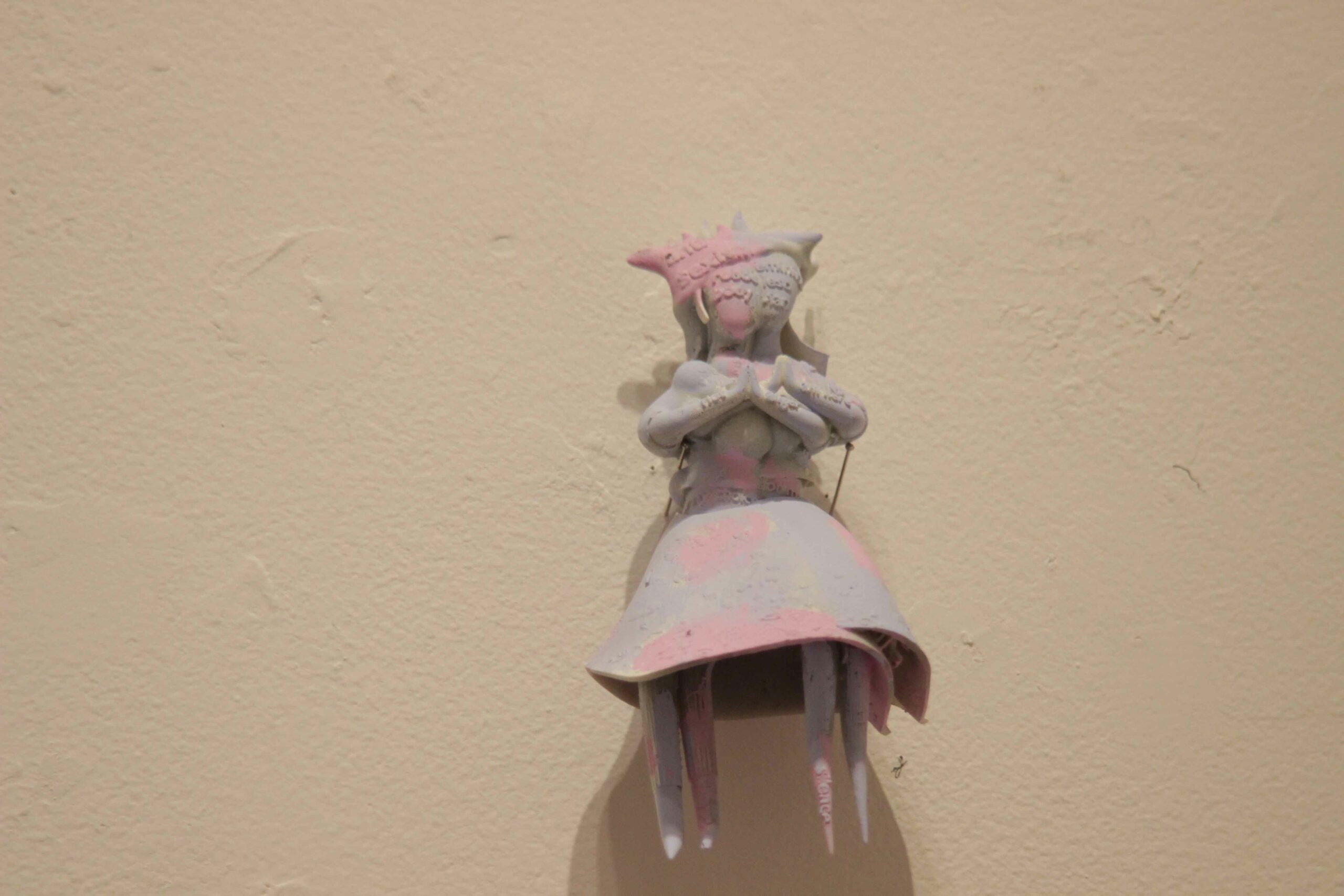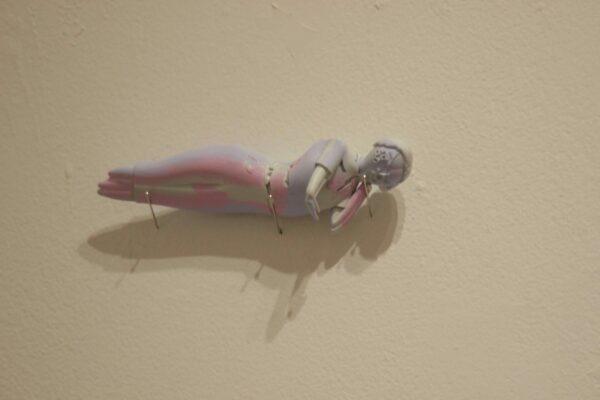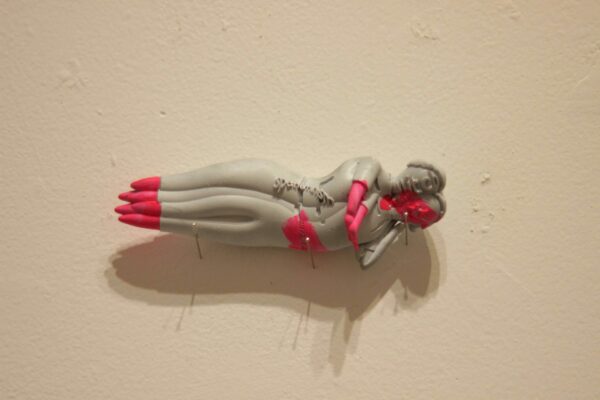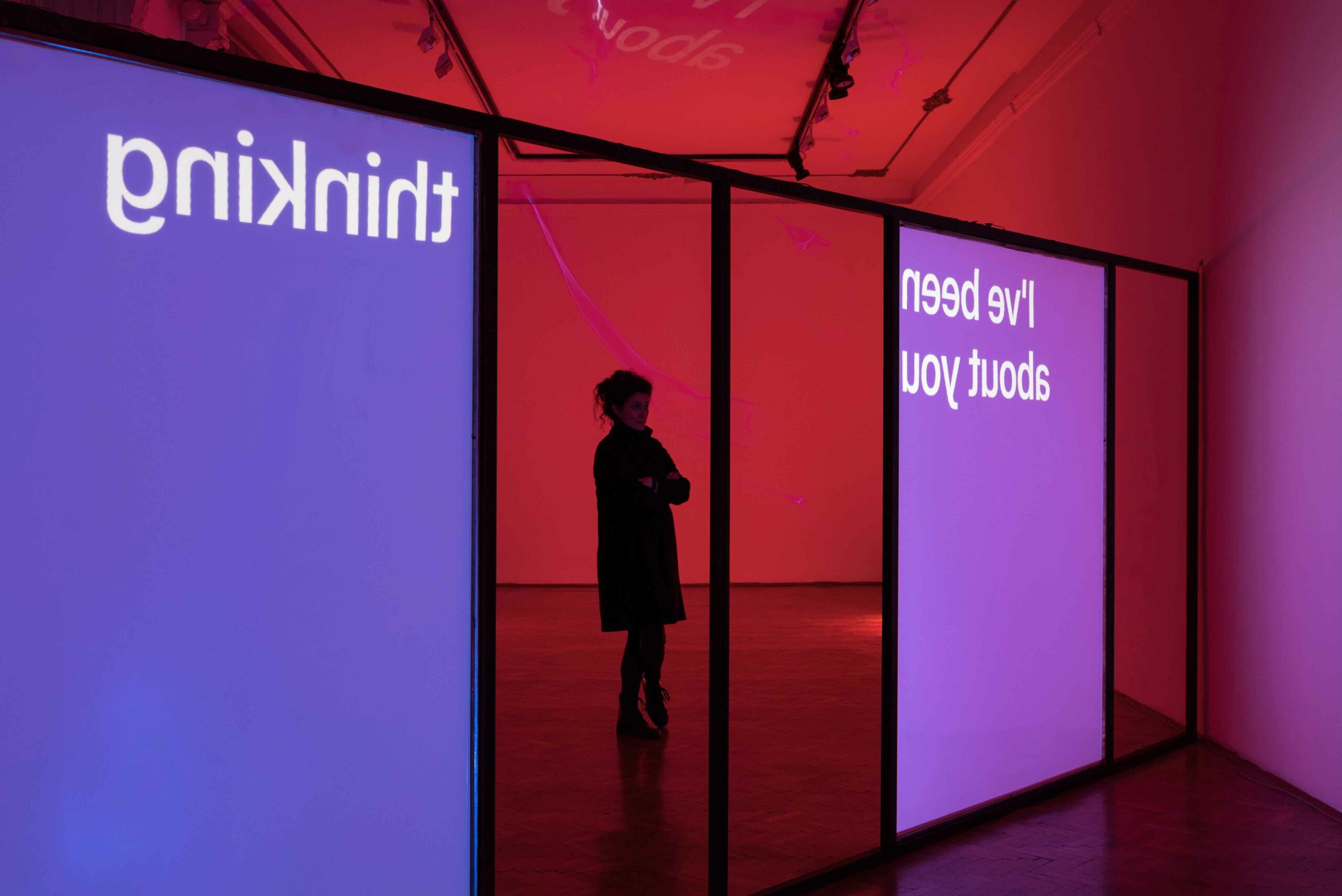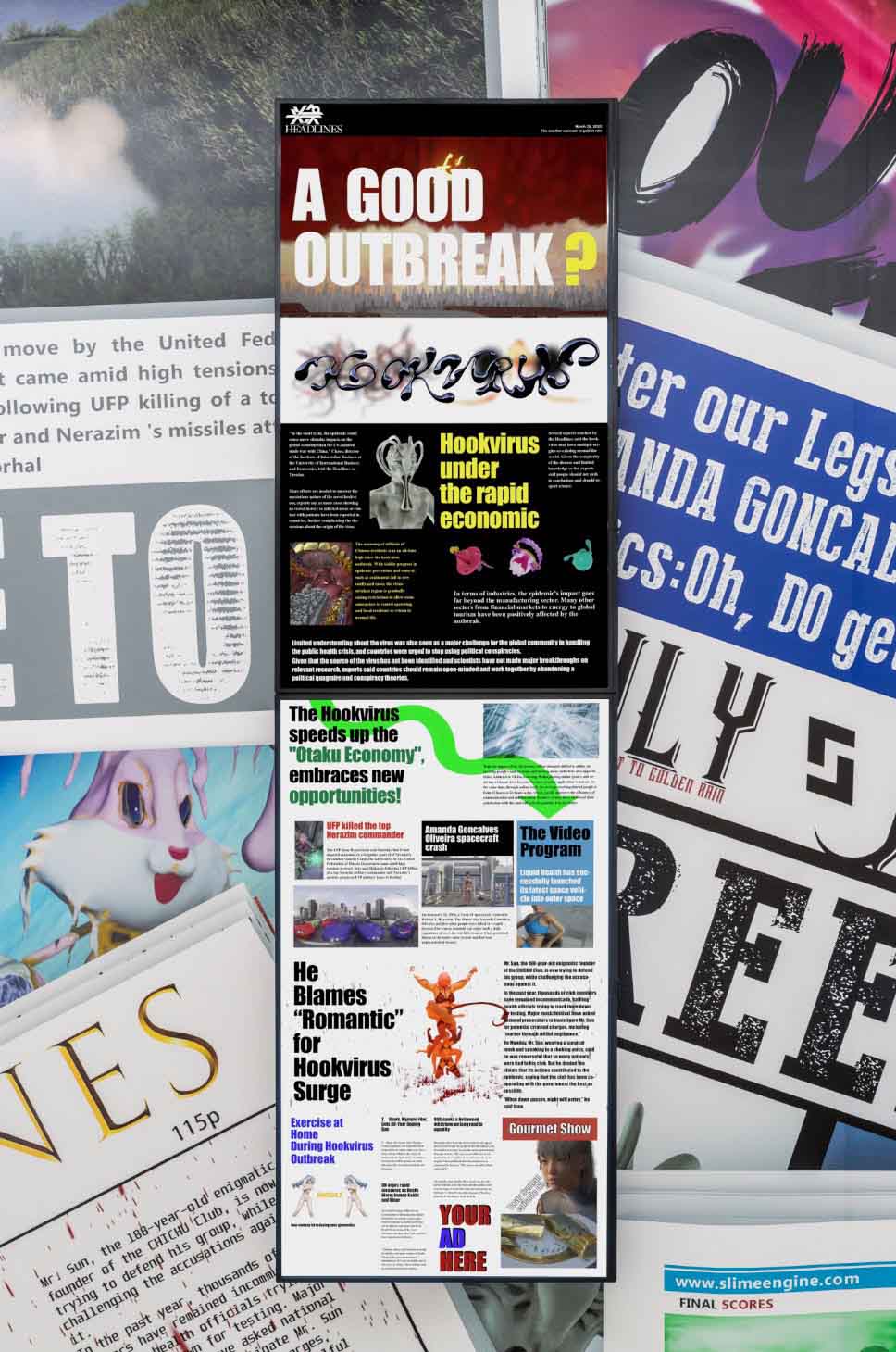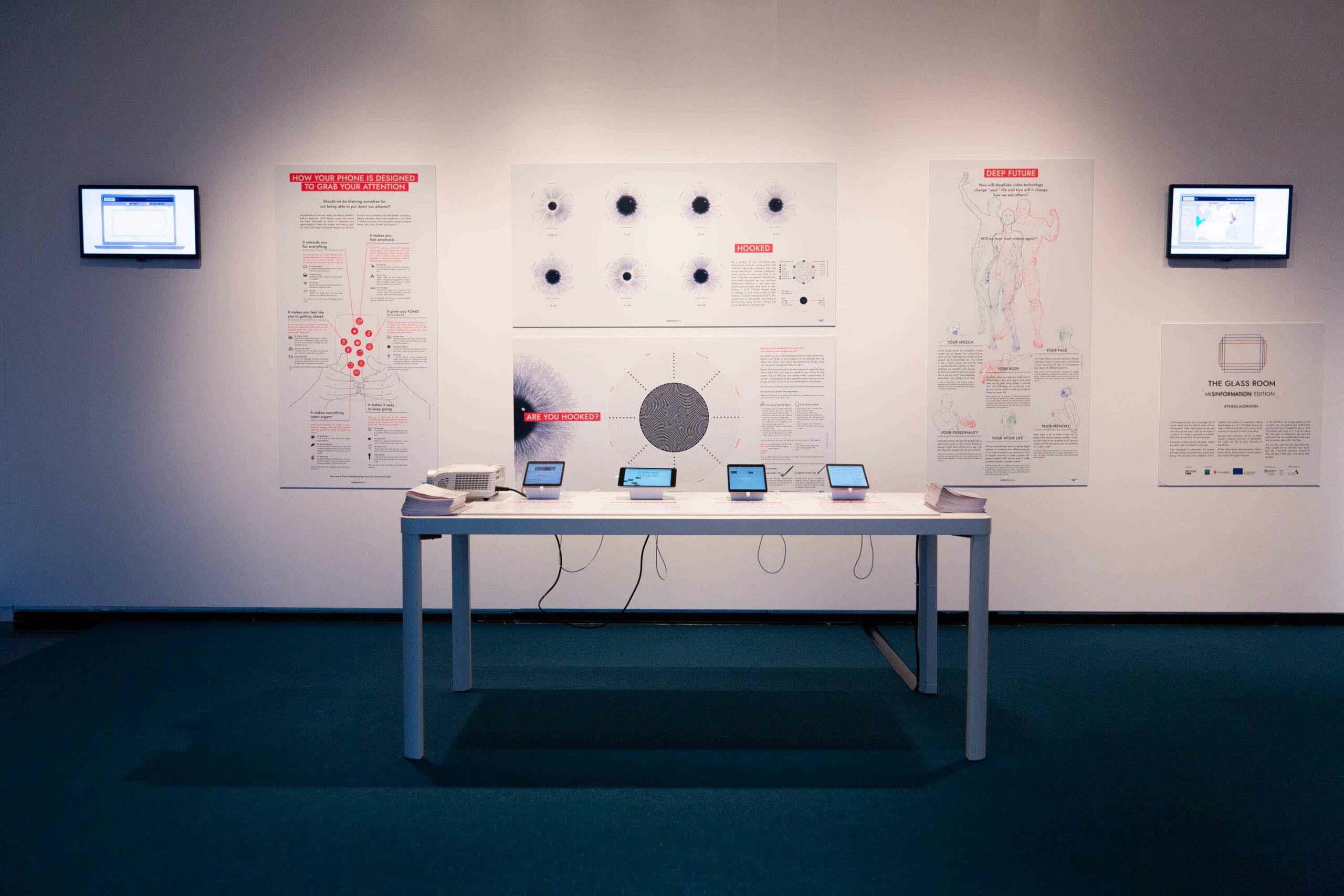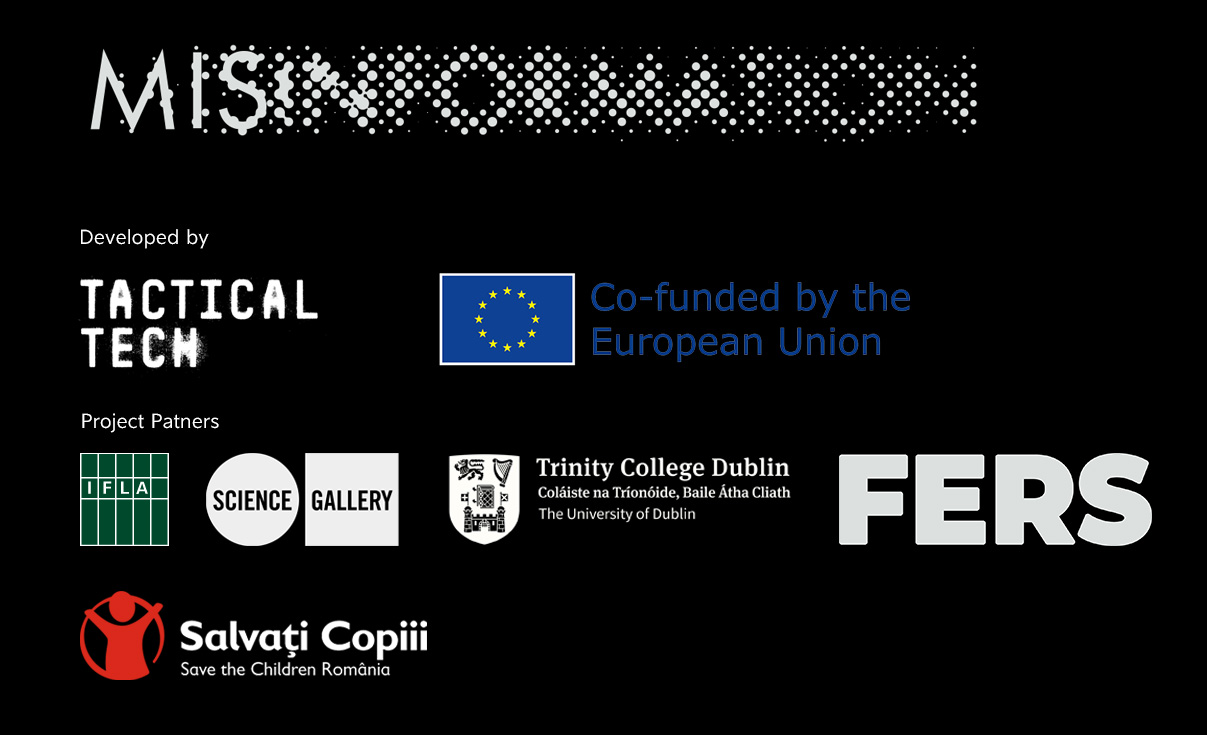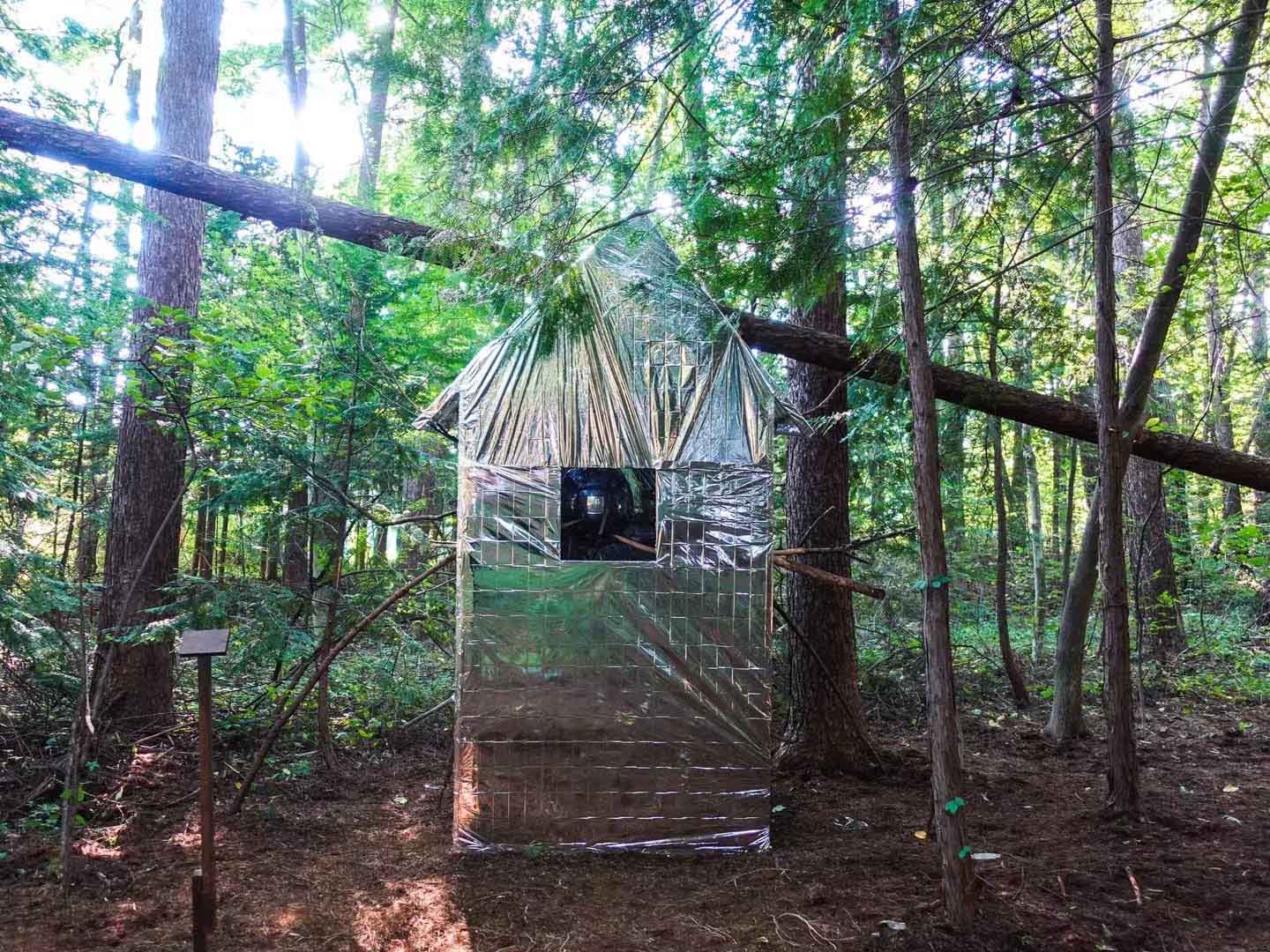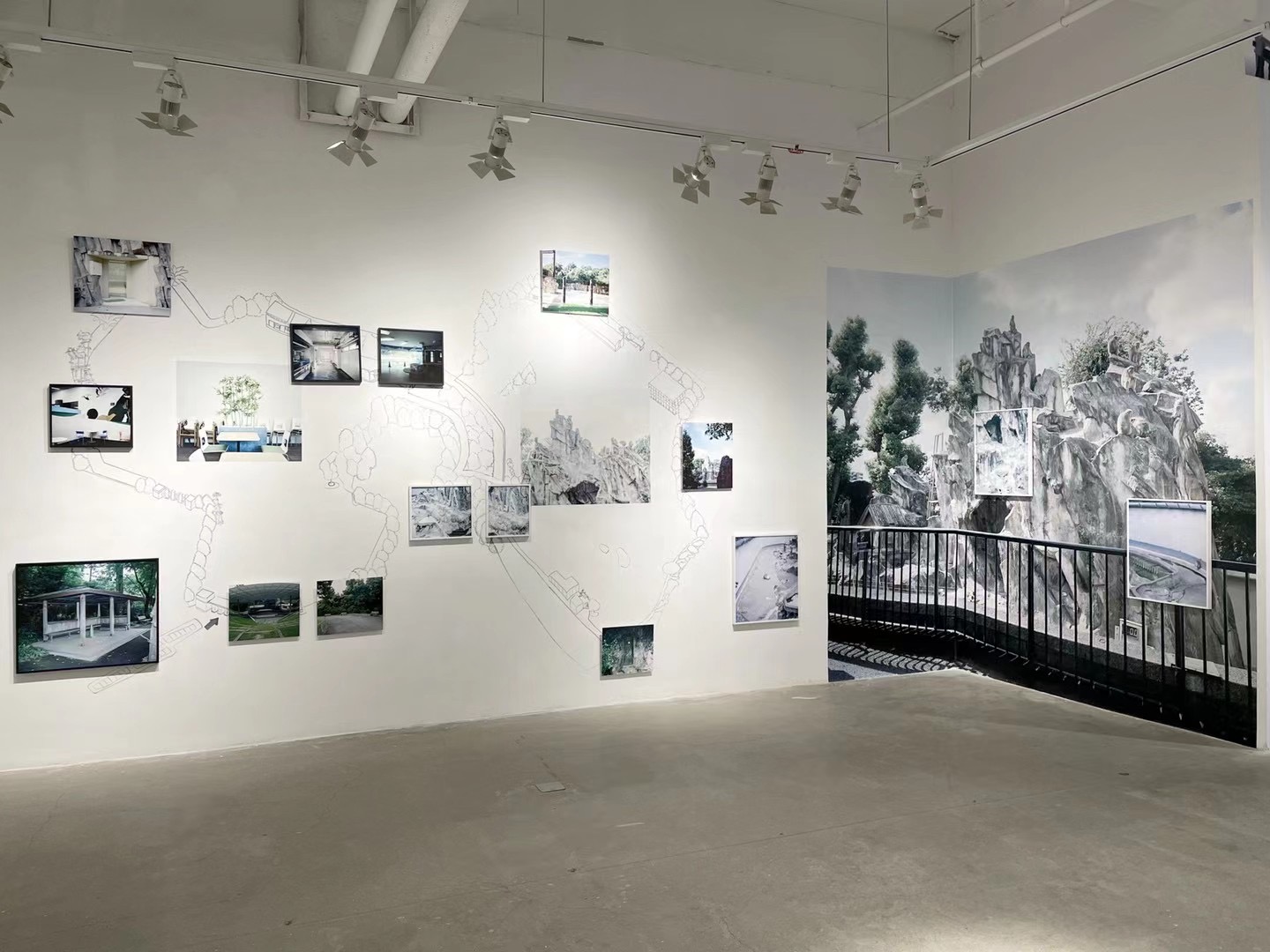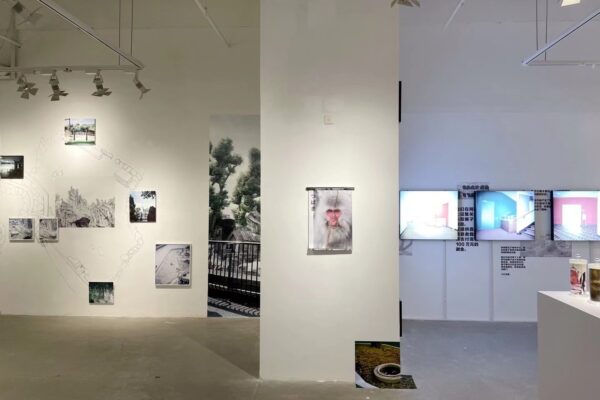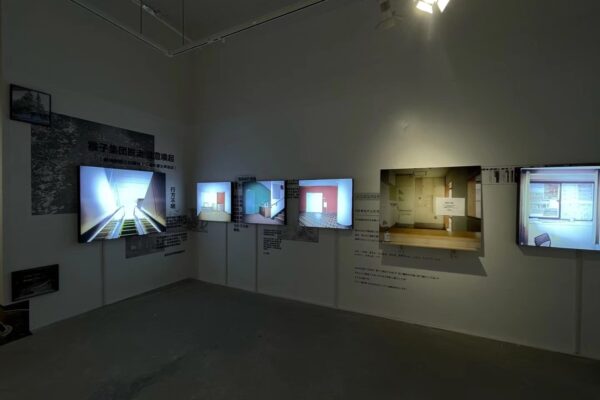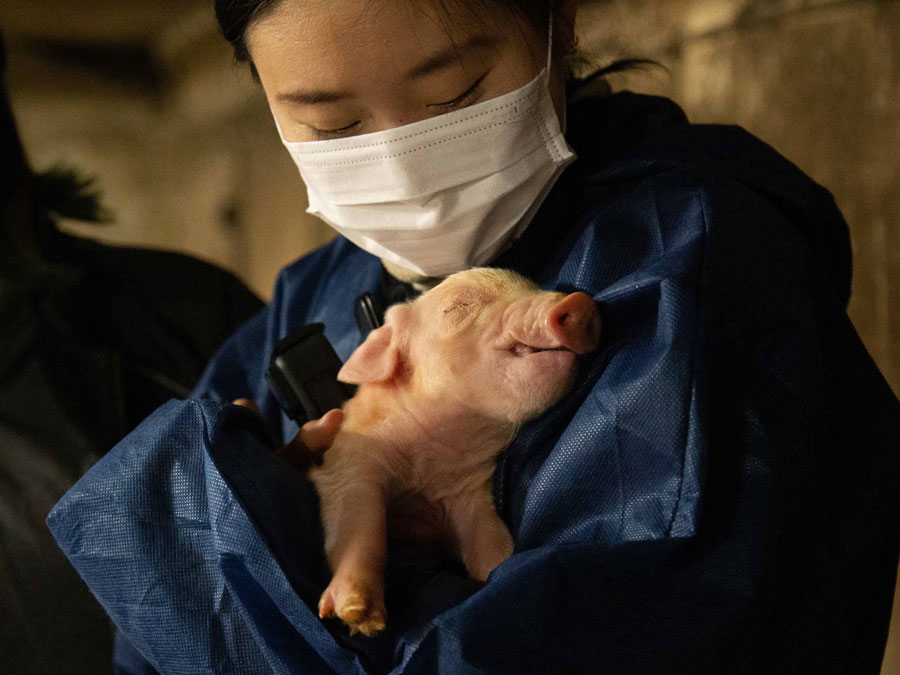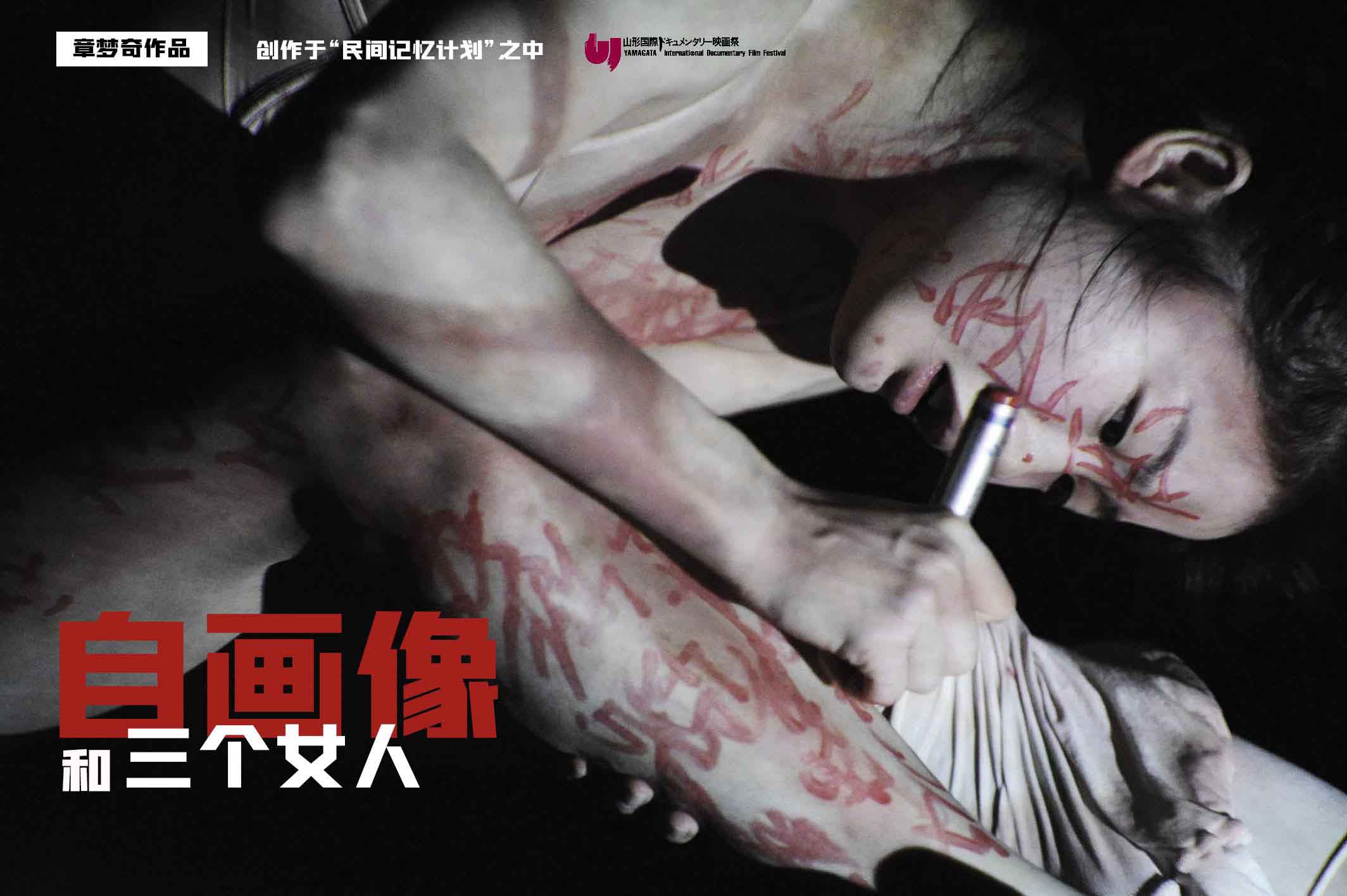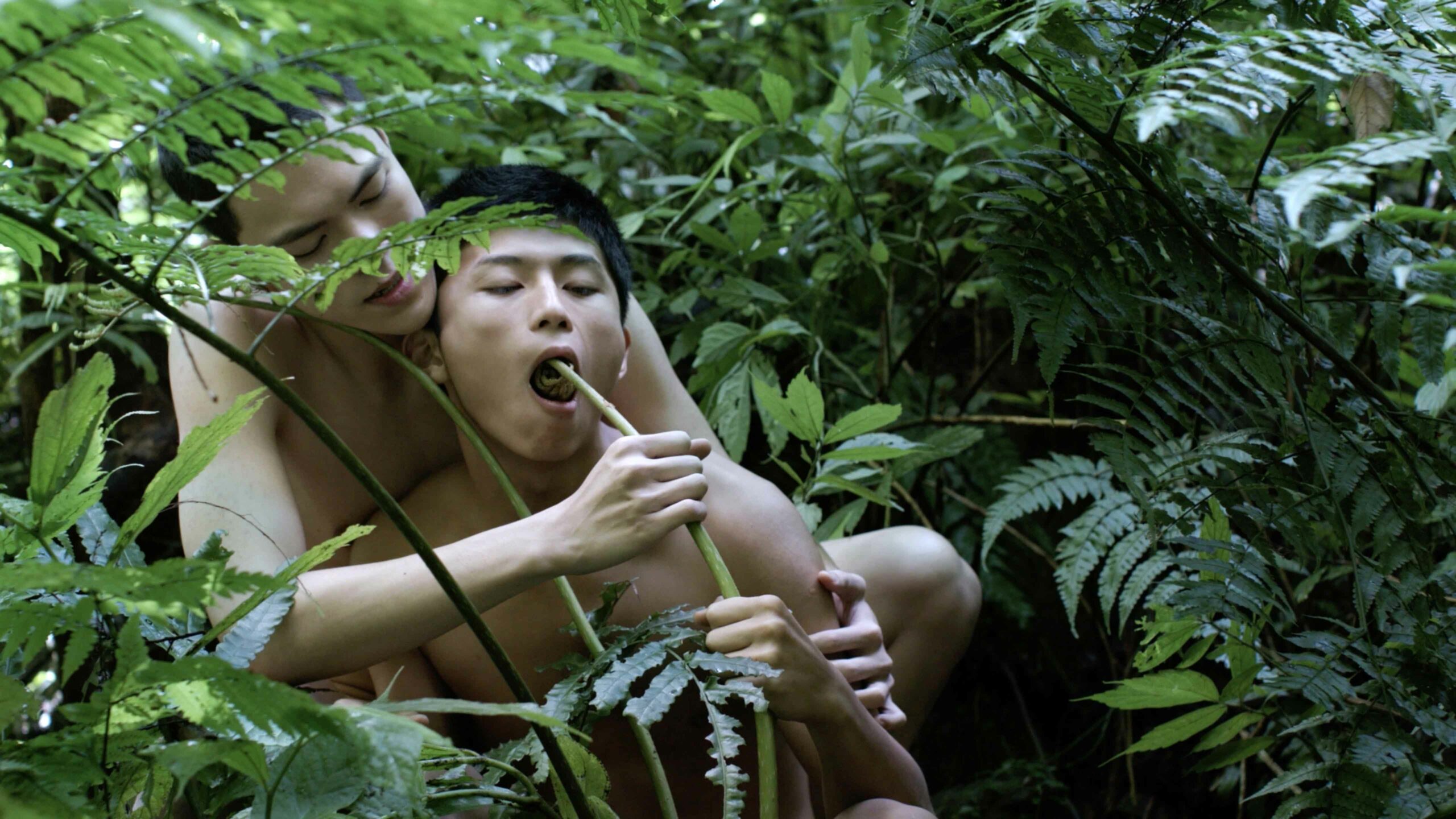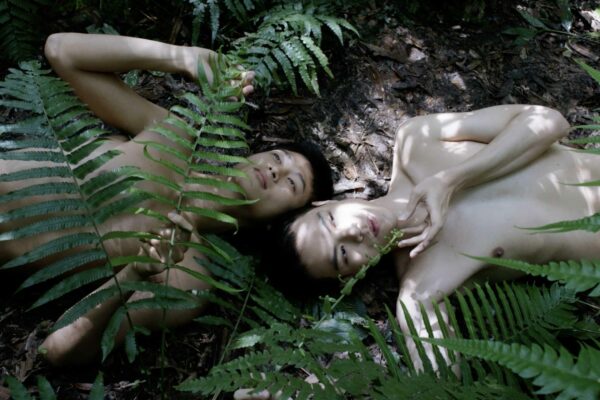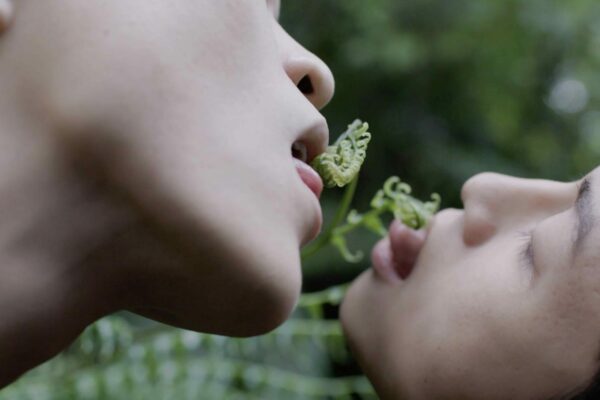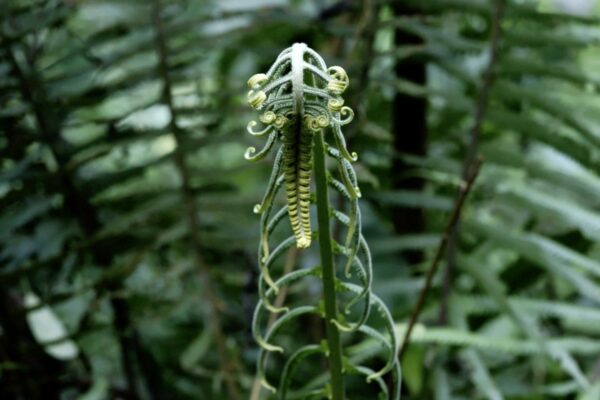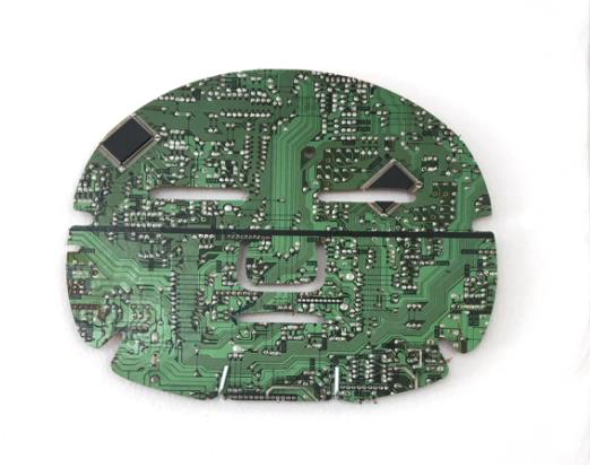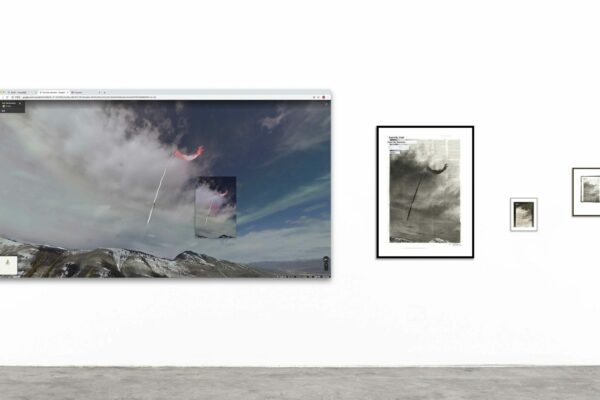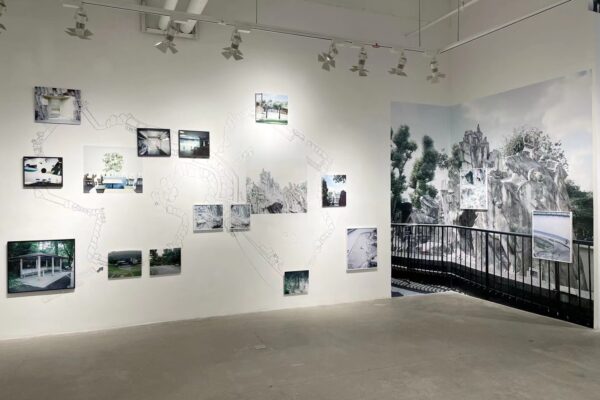‘filthglycerin’, ⓒ Agustine Zegers, courtesy of artist
filthglycerin (2017)agustine zegers
For this exhibition, zegers-san will revisit their work “filthglycerin” from 2017. In this work, a subtle criticism of Western colonial systems of biomedicine and hygiene is performed through the juxtaposition of bottled glycerin soap with fermenting biological elements such as saliva and hair belonging to a dog; a piece updated in the post-COVID world through the usage of alcohol gel as maceration base.
Zoom, n°1 (2021)Felipe Rivas San Martín
The piece selected for this exhibition is testimony to the years of artistic reflection towards the effects that media and technology play in the construction of our social and gendered identities. In series such as “Pinturas de interfaz” `{`“Interface Painting”`}`, which the artist began in 2010, Felipe-san proposes a medial displacement, when translating web interfaces into oil painting allowing for a textural and semiological deconstruction of this new media. For the “Virtual Bodies'' exhibition, Felipe-san will show “Zoom, n°1”, a commissioned textile piece in which the artist reinterprets our emerging relation to time, work and human connection by reproducing the outline of a literal Z*om call he took during social distancing, using felt and recycled fabrics in bright, tropical colors.
Mascara electrónica (2021)Karla Leyva
“Mascara electrónica”, which translates from Spanish as “Electronic Mask”. Inspired by both today’s digital consumer culture and also the elaborate masks found in Pre Columbian Mexican Art, the piece uses chipboards from waste electronics and creates laser-cut renders of cosmetic beauty masks. The result is an uncanny depiction of how digital media can influence our own self-perception and identity: as if we are constantly wearing an invisible mask composed from our digital avatars.
Notifications(2021)Kondo Ginga
The piece selected from this exhibition, “Notifications”, was produced amidst the social distancing required under the COVID-19 global pandemic. In this digital rendering and video piece, KONDÔ-san disavows from the emerging discourses surrounding the pandemic that are weary of the growing necessity for technology in our daily life, as she herself as a differently-able-bodied person has depended for many years on technical mediation for menial tasks such as mobility and therefore communication as well. From this post-humanistic perspective, KONDÔ-san asks us to reconsider which bodies are allowed to experience paranoid disregard towards media and technology, while submerging the audience in a free flowing and seemingly infinite array of menacing screens which provide disorienting flashes of information and personhood; maybe, even insight onto different ways of living.
Queer Street TUA (2017)Kondo Ginga
The digital landscape and video piece “Queer Street” (2017) is a historical exploration of the territory surrounding the venue in Ueno Park, particularly during the revolt of male prostitutes in 1948 who where being targeted by government officials. The artists reflects on the intagible queer history of the territory by creating a virtual ambiance of the park during rainfall, in which different slogans regarding queer politics and representation appear in the facade of building ther present.
Internet Sketching — 1984 - The Red Flag is Flying(2020)Li Shun
Li creating his “Internet Sketch” series based on the concept of Woyou (Imaginary Tour) from the Wei-Jin era in China, in which ancient people found creative alternatives to physical travels in Shanshui Hua (Landscape paintings). In this project series, Li travels to specific geographical sites and locations on Google Maps and goes through a meticulous process of recording his trip – screenshotting, re-photographing, and finally sketching his destination view. In his work “1984 – the red flag is flying,” Li visits a ski resort in Utah City, U.S.A. and encounters a red flag. While his work shed light on the possibilities of virtual travel in the age of post-COVID, it also provokes questions on mobility and physicality of the experience.
Platform Ghosts (2020)Sebastian Schmieg + Silvio Lorusso + LOREM
This installation consists of a simple rectangular structure with certain transparent panels covered in smart film. Through software programing, the panels start out densely imbued with a saturated violet, from which off white frases that evoque a profound sense of existential introspection emerge. However, the more people come close to observe the installation, these panels become progressively transparent until completely see-through. In this piece, the artists speculate about the future of human life in the era of automated smart cities, applying the metaphor of the ghost to reflect on the politics of representation in digital platforms and the trafficking of affects through social media.
Headlines1 (2020)Slime Engine
The piece selected for the exhibition is called ``Headlines``, a net art and video-installation project whose first iteration appeared in 2020 amidst the global pandemic. A constantly evolving piece, it is an exploration on the dissemination of fake news in mainstream media and particularly on the cynical preoccupation of news outlets about the economical impact of COVID-19 amidst the humanitarian crisis. An overflow of clinical and incoherent headlines shower over ad campaigns for nonexistent commodities and Japanesque pop avatars. Although initially developed as a digital landscape, the piece has been presented as an installation with monitors mounted over custom wallpaper and other electronic additions. A unique reimagining of the video-installation had been commissioned from the exhibition.
The Glass Room Misinformation Edition (2020-present)TACTICAL TECH
Through the use of infographic posters, visuals aids such as statistics with accurate graphs, and factual and well researched textual information, ``The Glass Room`` empowers audiences to draw well-informed conclusions about how media—traditional and also digital and social media—can affect our conducts and world views, and even spread dangerous misinformation at rapid speed. Creating a space designed for interactive referencing including a desk layout, this piece encourages the viewer to reconsider their own agency as consumers of media, making the exhibition into a microcosm that seeks to confront the anxiety-inducing information overload that we are living in our everyday lives.
The Illusion of Nogeyama (2021)Wei Zihan
In this exhibition, Wei will present her recent works, including the photographic installation “Going to the Zoo is Serious Business” (2020) and mixed-media installation “The Illusion of Nogeyama” (2021). In both of her works, Wei provides a critical commentary on anthropocentric views towards the relationship between humans and animals by exploring the politics of oppositional perspectives (to “see” and “be seen”) and the absence/presence of humans.
Going to the Zoo is Serious Business (2020)Wei Zihan
In this exhibition, Wei will present her recent works, including the photographic installation “Going to the Zoo is Serious Business” (2020) and mixed-media installation “The Illusion of Nogeyama” (2021). In both of her works, Wei provides a critical commentary on anthropocentric views towards the relationship between humans and animals by exploring the politics of oppositional perspectives (to “see” and “be seen”) and the absence/presence of humans.
Memento Momo (2019 - 2022)Yashima Ryoko
In this exhibition, Yashima will exhibit her ongoing project “Memento Momo” (2019-2021) for the first time. Her project consists of a variety of documentation capturing the process of Yashima raising and slaughtering a female pig “Momo,” named after the protagonist in Michael Ende’s novel. In an age where the physical body is increasingly treated as a precarious entity, Yashima faces its miraculous and cruel aspects, its essence, with the concept of time.
Self-Portrait with Three Women (2010)Zhang Mengqi
Returning home after college and living with both her mother and grandmother, ZHANG-san is confronted with an ambivalent desire to both connect with her heritage as well as rebel and break free from traditions. The artist intersects autographic dialogs with her family's matriarchs, interior monologs and shots of her daily life with more poetic, performative images of the dancer moving while interacting with different technologies such as electronic scanners and digital projections displaying the footage of herself as well as from interviews with her mother and grandmother.
Pteridophilia 4 (2019)Zheng Bo
The piece selected for this exhibition is the fourth part of the “Pteridophilia” film project. This project could be described as a corporeal and visual exploration of the interspecies relations between humans and other plant species, particularly ferns. In the guise of ecosexual performance, the artist explores a queer notion of desire when East Asian male bodies interact with different fern species in their natural habitat, pleasuring themeselves and sometimes consuming organic elements. With its first installment from 2016, and the next two installments dating from 2018 before the pandemic crisis, ZHENG-san will grace us with a fourth iteration of the piece, revisiting this potent film at a time where our relationship to nature and to the body is shifting.
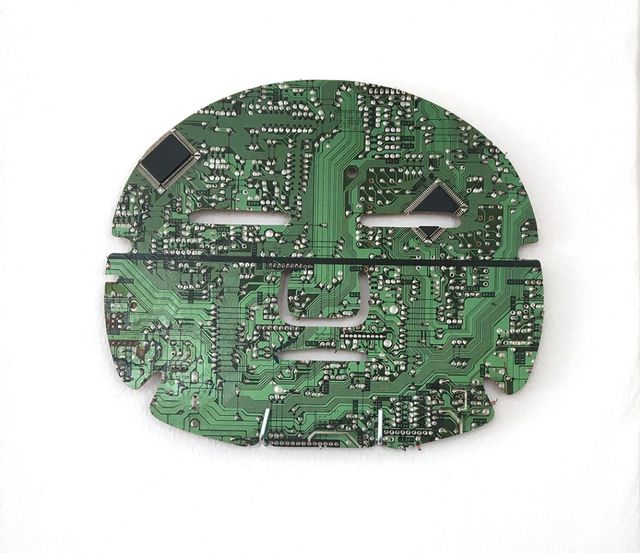
「Máscara electrónica」 2021 © Karla Leyva, courtesy of the artist
Platform Ghosts, 2020, installation
Photo: Hrvoje Franjić
© Silvio Lorusso + Sebastian Schmieg + LOREM
Exhibits
filthglycerin (2017)agustine zegers
-
For this exhibition, zegers-san will revisit their work “filthglycerin” from 2017. In this work, a subtle criticism of Western colonial systems of biomedicine and hygiene is performed through the juxtaposition of bottled glycerin soap with fermenting biological elements such as saliva and hair belonging to a dog; a piece updated in the post-COVID world through the usage of alcohol gel as maceration base.
Zoom, n°1 (2021)Felipe Rivas San Martín
-
The piece selected for this exhibition is testimony to the years of artistic reflection towards the effects that media and technology play in the construction of our social and gendered identities. In series such as “Pinturas de interfaz” `{`“Interface Painting”`}`, which the artist began in 2010, Felipe-san proposes a medial displacement, when translating web interfaces into oil painting allowing for a textural and semiological deconstruction of this new media. For the “Virtual Bodies'' exhibition, Felipe-san will show “Zoom, n°1”, a commissioned textile piece in which the artist reinterprets our emerging relation to time, work and human connection by reproducing the outline of a literal Z*om call he took during social distancing, using felt and recycled fabrics in bright, tropical colors.
Mascara electrónica (2021)Karla Leyva
-
“Mascara electrónica”, which translates from Spanish as “Electronic Mask”. Inspired by both today’s digital consumer culture and also the elaborate masks found in Pre Columbian Mexican Art, the piece uses chipboards from waste electronics and creates laser-cut renders of cosmetic beauty masks. The result is an uncanny depiction of how digital media can influence our own self-perception and identity: as if we are constantly wearing an invisible mask composed from our digital avatars.
Notifications (2021)Kondo Ginga
-
The piece selected from this exhibition, “Notifications”, was produced amidst the social distancing required under the COVID-19 global pandemic. In this digital rendering and video piece, KONDÔ-san disavows from the emerging discourses surrounding the pandemic that are weary of the growing necessity for technology in our daily life, as she herself as a differently-able-bodied person has depended for many years on technical mediation for menial tasks such as mobility and therefore communication as well. From this post-humanistic perspective, KONDÔ-san asks us to reconsider which bodies are allowed to experience paranoid disregard towards media and technology, while submerging the audience in a free flowing and seemingly infinite array of menacing screens which provide disorienting flashes of information and personhood; maybe, even insight onto different ways of living.
Queer Street TUA (2017)Kondo Ginga
-
The digital landscape and video piece “Queer Street” (2017) is a historical exploration of the territory surrounding the venue in Ueno Park, particularly during the revolt of male prostitutes in 1948 who where being targeted by government officials. The artists reflects on the intagible queer history of the territory by creating a virtual ambiance of the park during rainfall, in which different slogans regarding queer politics and representation appear in the facade of building ther present.
Internet Sketching — 1984 - The Red Flag is Flying(2020)Li Shun
-
Li creating his “Internet Sketch” series based on the concept of Woyou (Imaginary Tour) from the Wei-Jin era in China, in which ancient people found creative alternatives to physical travels in Shanshui Hua (Landscape paintings). In this project series, Li travels to specific geographical sites and locations on Google Maps and goes through a meticulous process of recording his trip – screenshotting, re-photographing, and finally sketching his destination view. In his work “1984 – the red flag is flying,” Li visits a ski resort in Utah City, U.S.A. and encounters a red flag. While his work shed light on the possibilities of virtual travel in the age of post-COVID, it also provokes questions on mobility and physicality of the experience.
Platform Ghosts (2020)Sebastian Schmieg + Silvio Lorusso + LOREM
-
This installation consists of a simple rectangular structure with certain transparent panels covered in smart film. Through software programing, the panels start out densely imbued with a saturated violet, from which off white frases that evoque a profound sense of existential introspection emerge. However, the more people come close to observe the installation, these panels become progressively transparent until completely see-through. In this piece, the artists speculate about the future of human life in the era of automated smart cities, applying the metaphor of the ghost to reflect on the politics of representation in digital platforms and the trafficking of affects through social media.
Headlines1 (2020)Slime Engine
-
The piece selected for the exhibition is called ``Headlines``, a net art and video-installation project whose first iteration appeared in 2020 amidst the global pandemic. A constantly evolving piece, it is an exploration on the dissemination of fake news in mainstream media and particularly on the cynical preoccupation of news outlets about the economical impact of COVID-19 amidst the humanitarian crisis. An overflow of clinical and incoherent headlines shower over ad campaigns for nonexistent commodities and Japanesque pop avatars. Although initially developed as a digital landscape, the piece has been presented as an installation with monitors mounted over custom wallpaper and other electronic additions. A unique reimagining of the video-installation had been commissioned from the exhibition.
The Glass Room Misinformation Edition (2020-present)TACTICAL TECH
-
Through the use of infographic posters, visuals aids such as statistics with accurate graphs, and factual and well researched textual information, ``The Glass Room`` empowers audiences to draw well-informed conclusions about how media—traditional and also digital and social media—can affect our conducts and world views, and even spread dangerous misinformation at rapid speed. Creating a space designed for interactive referencing including a desk layout, this piece encourages the viewer to reconsider their own agency as consumers of media, making the exhibition into a microcosm that seeks to confront the anxiety-inducing information overload that we are living in our everyday lives.
Going to the Zoo is Serious Business (2020)Wei Zihan
-
In this exhibition, Wei will present her recent works, including the photographic installation “Going to the Zoo is Serious Business” (2020) and mixed-media installation “The Illusion of Nogeyama” (2021). In both of her works, Wei provides a critical commentary on anthropocentric views towards the relationship between humans and animals by exploring the politics of oppositional perspectives (to “see” and “be seen”) and the absence/presence of humans.
The Illusion of Nogeyama (2021)Wei Zihan
-
In this exhibition, Wei will present her recent works, including the photographic installation “Going to the Zoo is Serious Business” (2020) and mixed-media installation “The Illusion of Nogeyama” (2021). In both of her works, Wei provides a critical commentary on anthropocentric views towards the relationship between humans and animals by exploring the politics of oppositional perspectives (to “see” and “be seen”) and the absence/presence of humans.
Memento Momo (2019 - 2022)Yashima Ryoko
-
In this exhibition, Yashima will exhibit her ongoing project “Memento Momo” (2019-2021) for the first time. Her project consists of a variety of documentation capturing the process of Yashima raising and slaughtering a female pig “Momo,” named after the protagonist in Michael Ende’s novel. In an age where the physical body is increasingly treated as a precarious entity, Yashima faces its miraculous and cruel aspects, its essence, with the concept of time.
Self-Portrait with Three Women (2010)Zhang Mengqi
-
Returning home after college and living with both her mother and grandmother, ZHANG-san is confronted with an ambivalent desire to both connect with her heritage as well as rebel and break free from traditions. The artist intersects autographic dialogs with her family's matriarchs, interior monologs and shots of her daily life with more poetic, performative images of the dancer moving while interacting with different technologies such as electronic scanners and digital projections displaying the footage of herself as well as from interviews with her mother and grandmother.
Pteridophilia 4 (2019)Zheng Bo
-
The piece selected for this exhibition is the fourth part of the “Pteridophilia” film project. This project could be described as a corporeal and visual exploration of the interspecies relations between humans and other plant species, particularly ferns. In the guise of ecosexual performance, the artist explores a queer notion of desire when East Asian male bodies interact with different fern species in their natural habitat, pleasuring themeselves and sometimes consuming organic elements. With its first installment from 2016, and the next two installments dating from 2018 before the pandemic crisis, ZHENG-san will grace us with a fourth iteration of the piece, revisiting this potent film at a time where our relationship to nature and to the body is shifting.

